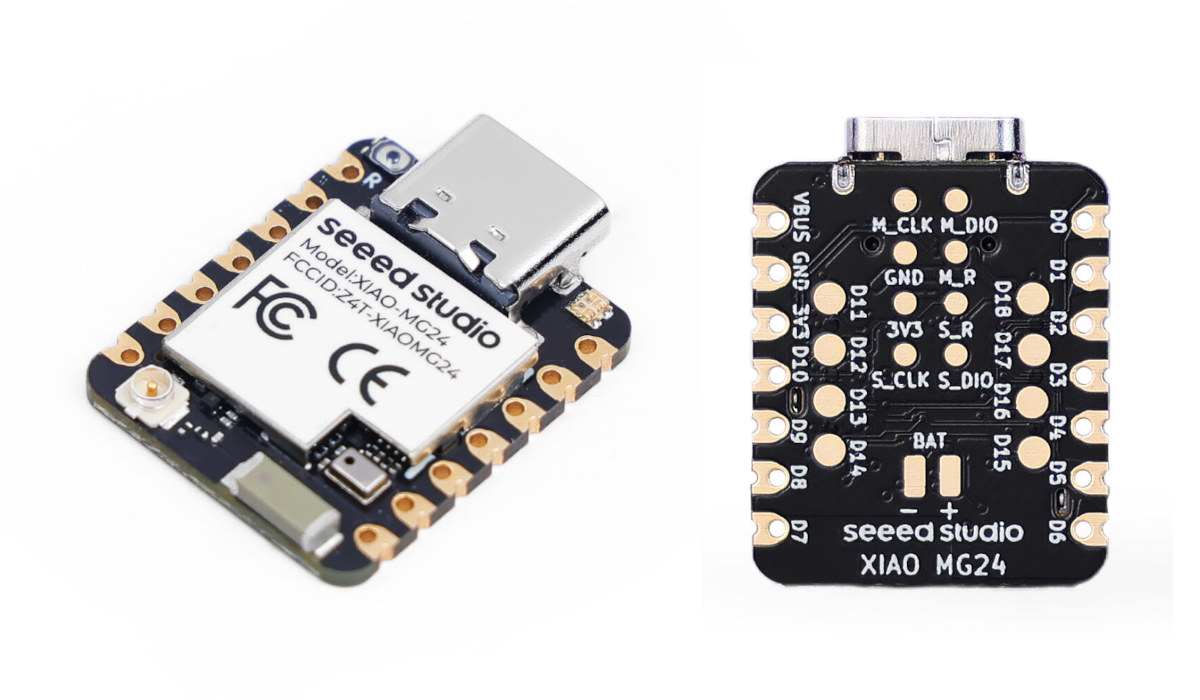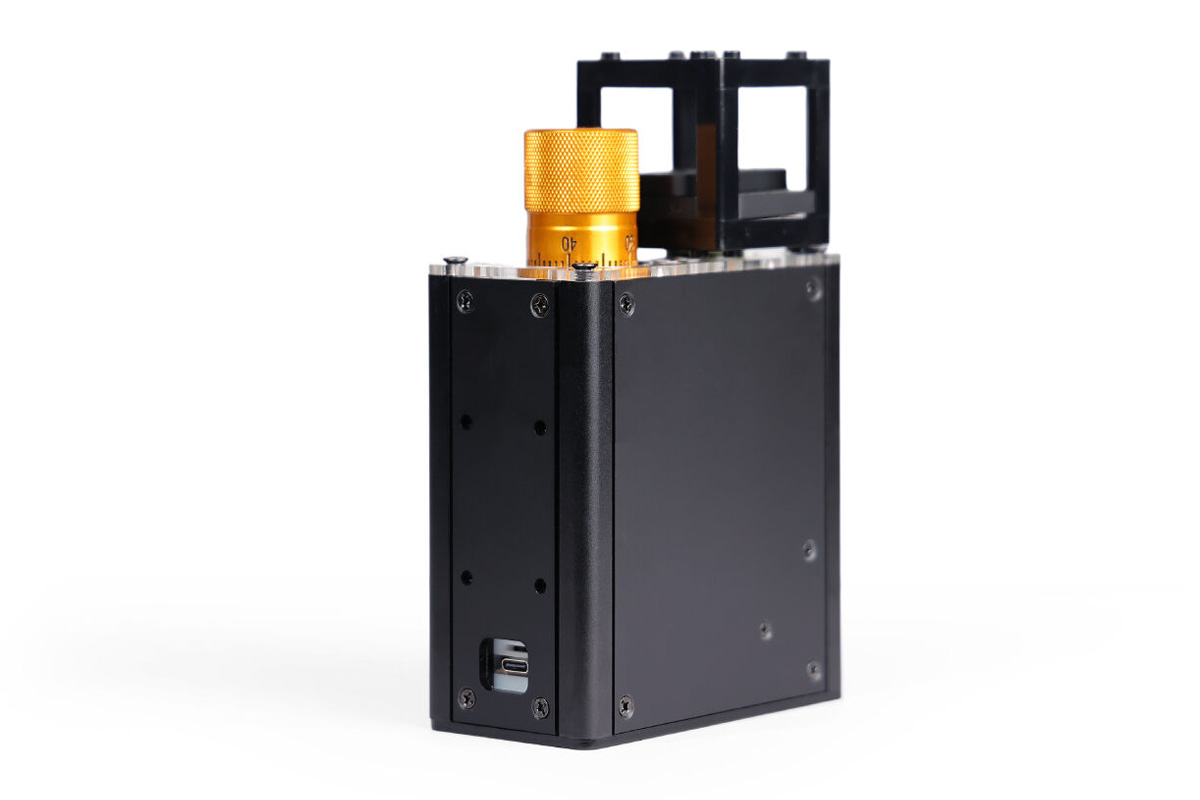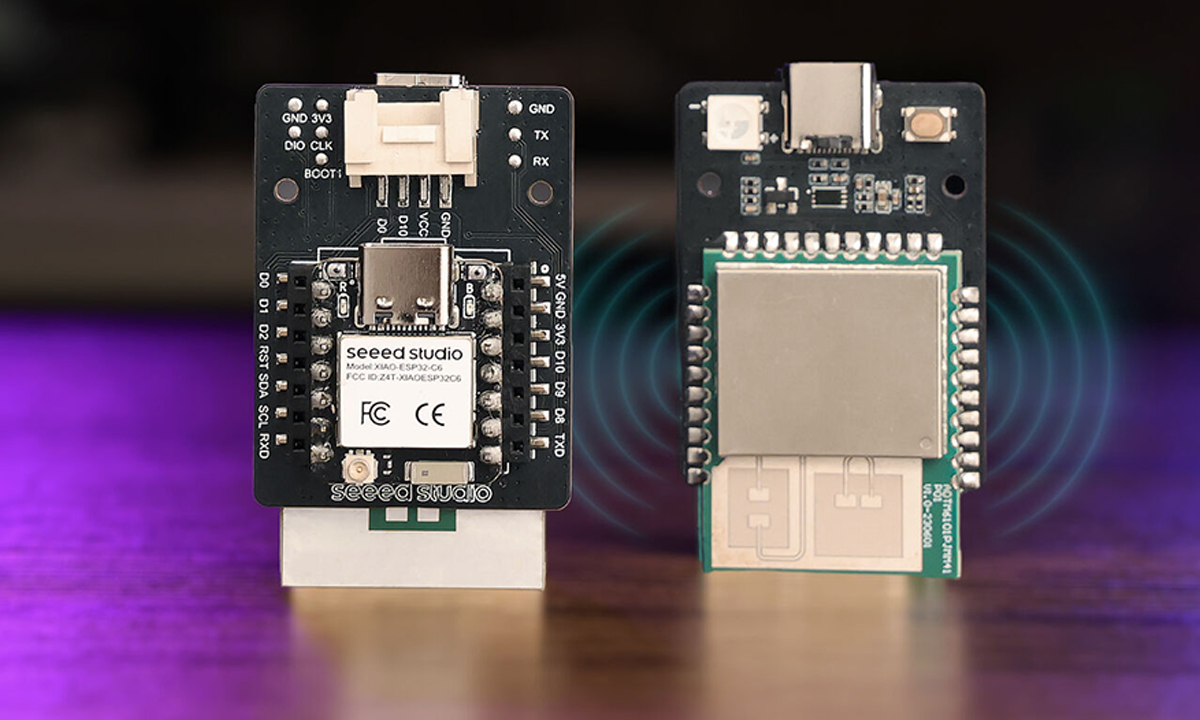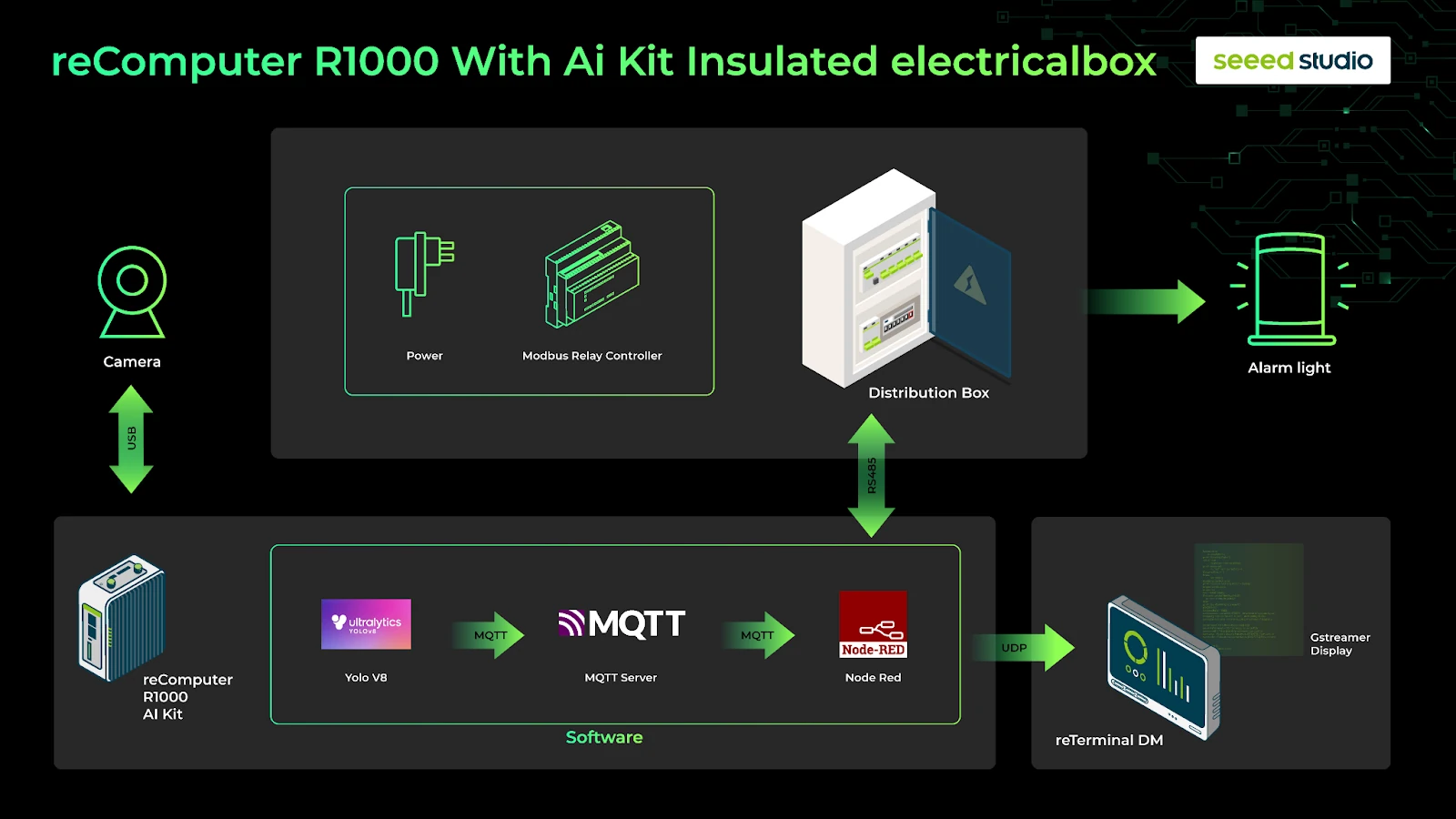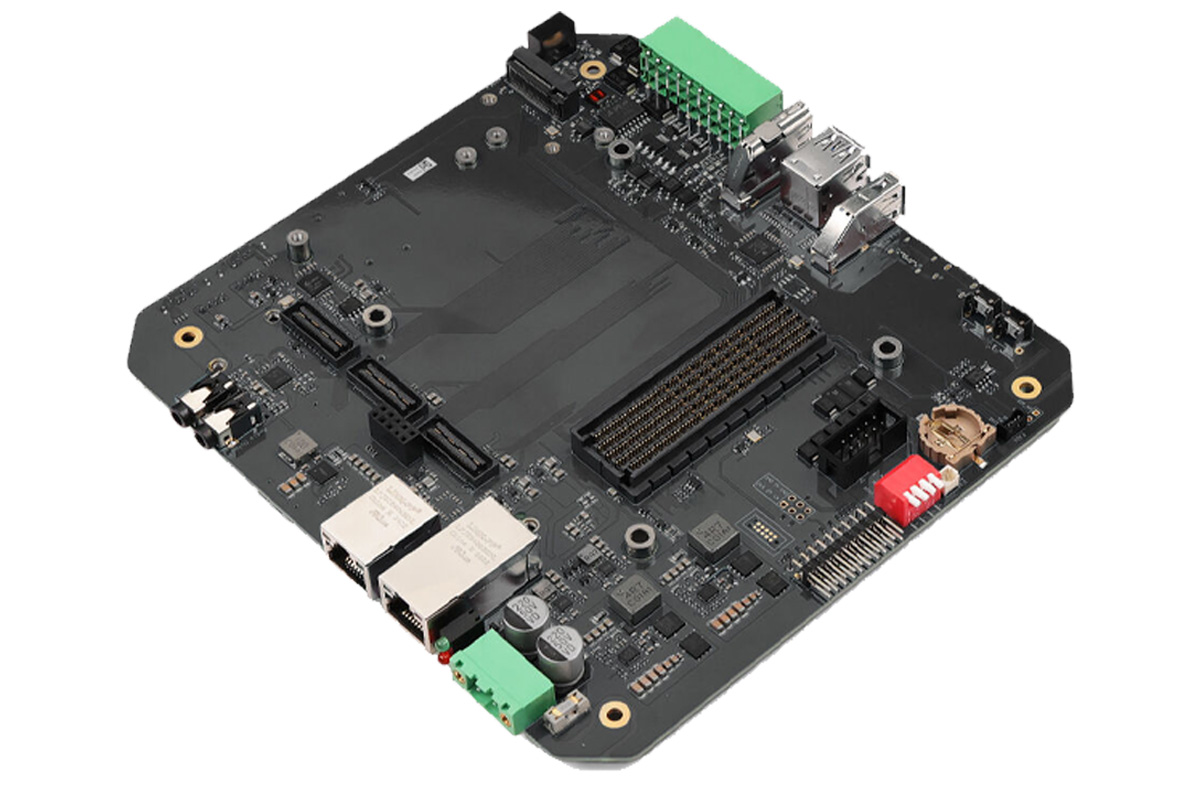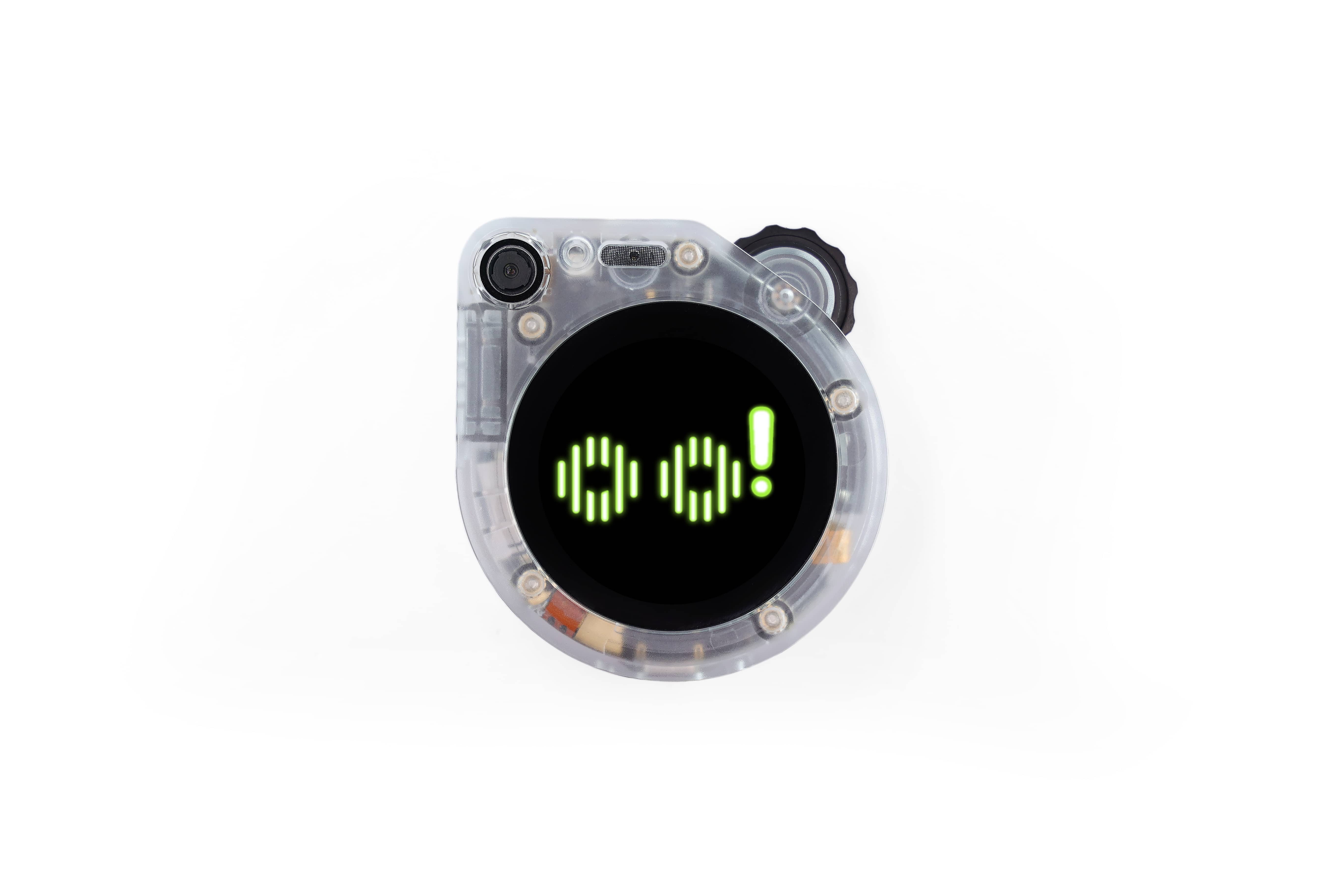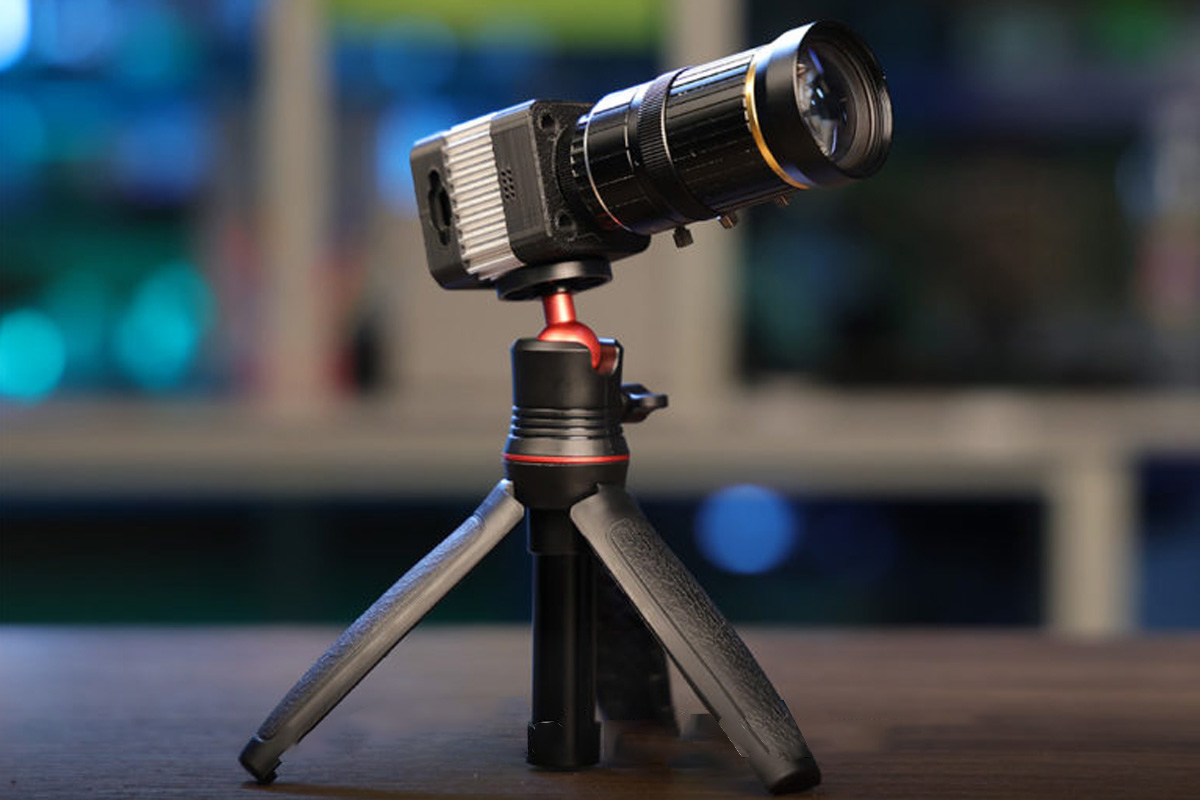Seeed Studio has added two members to its XIAO family of tiny MCU boards with the XIAO MG24 and XIAO MG24 Sense boards based on Silicon Labs EFR32MG24 multi-protocol wireless SoC and designed for battery-powered Matter over Thread and Bluetooth LE 5.3 applications. Both 21×17.8 mm USB-C boards feature a 78MHz Silabs MG24 Cortex-M33 microcontroller with 256kB SRAM and 1536KB flash, an additional 4MB SPI flash on-board, and 22 pins and pads for GPIO pins, analog inputs, and power signals, plus a reset button and two LEDs. The “Sense” model adds an analog microphone and a 6-axis IMU sensor. XIAO MG24/MG24 Sense specifications: SoC – Silicon Labs EFR32MG24 (EFR32MG24B220F1536IM48-B) MCU cores Arm Cortex-M33 @ 78.0 MHz with DSP instruction and floating-point unit for user application Arm Cortex-M0+ core for wireless Memory – 256 KB RAM Storage – 1536 KB flash Wireless protocols – Matter, OpenThread, Zigbee, Bluetooth Low Energy 5.3, […]
OpenUC2 10x is an ESP32-S3 portable microscope with AI-powered real-time image analysis
Seeed Studio has recently launched the OpenUC2 10x AI portable microscope built around the XIAO ESP32-S3 Sense module. Designed for educational, environmental research, health monitoring, and prototyping applications this microscope features an OV2640 camera with a 10x magnification with precise motorized focusing, high-resolution imaging, and real-time TinyML processing for image handling. The microscope is modular and open-source making it easy to customize and expand its features using 3D-printed parts, motorized stages, and additional sensors. It supports Wi-Fi connectivity with a durable body, uses USB-C for power and swappable objectives make it usable in various applications. Previously we have written about similar portable microscopes like the ioLight microscope and the KoPa W5 Wi-Fi Microscope, and Jean-Luc also tested a cheap USB microscope to read part number of components. Feel free to check those out if you are looking for a cheap microscope. OpenUC2 10x specifications: Wireless MCU – Espressif Systems ESP32-S3 CPU […]
Seeed Studio launches ESP32-C6-powered 60GHz mmWave human fall detection and breathing/heartbeat detection sensor kits
Last year, we reviewed the MR60FDA1 60GHz mmWave fall detection sensor kit, which utilizes the XIAO ESP32C3 module as its core. This module, featuring both Wi-Fi and Bluetooth connectivity, opens up various IoT applications. Now, Seeed Studio has introduced advanced mmWave sensor modules specifically designed for enhanced fall detection and heartbeat monitoring. The MR60FDA2 is optimized for fall detection, while the MR60BHA2 is designed for heartbeat monitoring. Powered by an ESP32-C6 WiFi 6 and RIS-Bluetotoh LE microcontroller, these modules offer reliable detection for real-time fall monitoring and accurate heartbeat tracking. They also feature customizable RGB LEDs and ambient light sensors, providing additional flexibility. With expansion options via Grove GPIO ports, these versatile modules are well-suited for applications like smart home integration and healthcare monitoring. Previously, we covered the RoomSense IQ and the DesignCore RS-6843AOPU with mmWave technology. The RoomSense IQ is an ESP32-S3-based modular room monitor with mmWave radar presence […]
reComputer R1000 Raspberry Pi CM4-powered IoT Gateway runs open-source software for Edge AI applications (Sponsored)
Seeed Studio is a Raspberry Pi-approved reseller and device designer. In May 2024, Seeed released their first edge IoT Raspberry Pi-powered gateway and controller, reComputer R1000. It is Raspberry Pi CM4-powered, with AI capabilities when equipped with Hailo NPU. It comes with all the necessary features that a robust and reliable industrial edge IoT device needs, along with rich and versatile interfaces like three RS485 ports, dual Ethernet, and flexible IoT wireless communication (4G, LoRa, Wi-Fi/BLE, Zigbee) and essential functional modules (GPS, UPS, TPM2.0, PoE, SSD, etc.). With Modbus and BACnet supported, it’s a perfect fit for remote access control, especially BMS, BAS, and iBMS. You’ll find more technical details in our previous article about the reComputer R1025, and on Seeed Studio’s product page where you can also purchase the AIoT gateway. As a powerful edge IoT controller and gateway with AI capabilities, it embraces the Raspberry Pi community, is […]
reServer Industrial J501 – An NVIDIA Jetson AGX Orin carrier board with 10GbE, 8K video output, GMSL camera support
Seeed Studio’s reServer Industrial J501, a Jetson AGX Orin carrier board designed for building Edge AI systems. With up to 275 TOPS of exceptional AI performance, this carrier board is designed for advanced robotics and edge AI applications for industrial environments. The carrier board features GbE and 10GbE LAN via RJ45 ports, three USB 3.1 ports, an HDMI 2.1 output, and multiple M.2 slots for expansion, including support for wireless connectivity via the M.2 Key B socket. Additionally, it has support for 8K video decoding and up to 8 GMSL cameras via an optional extension board. reServer Industrial J501 Jetson AGX Orin carrier board specification System-on-Module (one or the other) SoM – NVIDIA Jetson AGX Orin 64GB with CPU – 12-core Arm Cortex-A78AE v8.2 64-bit processor with 3MB L2 + 6MB L3 cache GPU / AI accelerators NVIDIA Ampere architecture with 2048 NVIDIA CUDA cores and 64 Tensor Cores @ […]
The SenseCAP Watcher is a voice-controlled, physical AI agent for LLM-based space monitoring (Crowdfunding)
Seeed Studio has launched a Kickstarter campaign for the SenseCAP Watcher, a physical AI agent capable of monitoring a space and taking actions based on events within that area. Described as the “world’s first Physical LLM Agent for Smarter Spaces,” the SenseCAP Watcher leverages onboard and cloud-based technologies to “bridge the gap between digital intelligence and physical applications.” The SenseCAP Watcher is powered by an ESP32-S3 microcontroller coupled with a Himax WiseEye2 HX6538 chip (Cortex-M55 and Ethos-U55 microNPU) for image and vector data processing. It builds on the Grove Vision AI V2 module and comes in a form factor about one-third the size of an iPhone. Onboard features include a camera, touchscreen, microphone, and speaker, supporting voice command recognition and multimodal sensor expansion. It runs the SenseCraft software suite which integrates on-device tinyML models with powerful large language models, either running on a remote cloud server or a local computer […]
T1000-E Card Tracker is a thin, credit card-sized GPS tracker with Meshtastic support
Seeed Studio has introduced the T1000-E, an updated version of the SenseCAP T1000 Card Tracker, built for Meshtastic. This rugged tracker is compact, about the size of a credit card, making it easy to carry or attach to assets. It uses Semtech LR1110 RF transceiver, Nordic Semi nRF52840 wireless SoC, and MediaTek/Aihora AG3335 GPS module for precise, low-power tracking and communication. With an IP65 rating for dust and water resistance, the T1000-E is ideal for reliable asset tracking. The T1000-E supports LoRa and Bluetooth v5.1 for communication and includes a 3-axis accelerometer, an LED, a buzzer, and a button for operation. It has internal antennas for GNSS, LoRa, Wi-Fi, and BLE communication range of 2 to 5 km, depending on the environment. SenseCAP Card Tracker T1000-E specifications: SoC – Nordic Semiconductor nRF52840 CPU – 32-bit Cortex-M4 core with FPU running at 64 MHz Flash – 1 MB RAM – 256 kB […]
reCamera modular AI camera features SG2002 RISC-V AI SoC, supports interchangeable image sensors and baseboards
Seeed Studio’s reCamera AI camera is a modular RISC-V smart camera system for edge AI applications based on SOPHGO SG2002 SoC. The camera is made up of three boards: the Core board, the Sensor board, and the Baseboard. The Core board includes hosts the processor, storage, and optional Wi-Fi. The Sensor board consists of image choice of image sensors, and the Baseboard provides various connectivity options including USB Type-C, UART, microSD, and optional PoE port and CAN bus connectivity options. At the time of writing the company has released the C1_2002w and C1_2002 core boards. The C1_2002w core board includes eMMC storage, Wi-Fi, and BLE modules, and the C1_2002 features extra SDIO and UART connectivity, but not WiFi. Both boards use the SOPHGO SG2002 tri-core processor and can be paired with various camera sensors for applications such as robotics, healthcare, smart home, as well as buildings and industrial automation. […]


